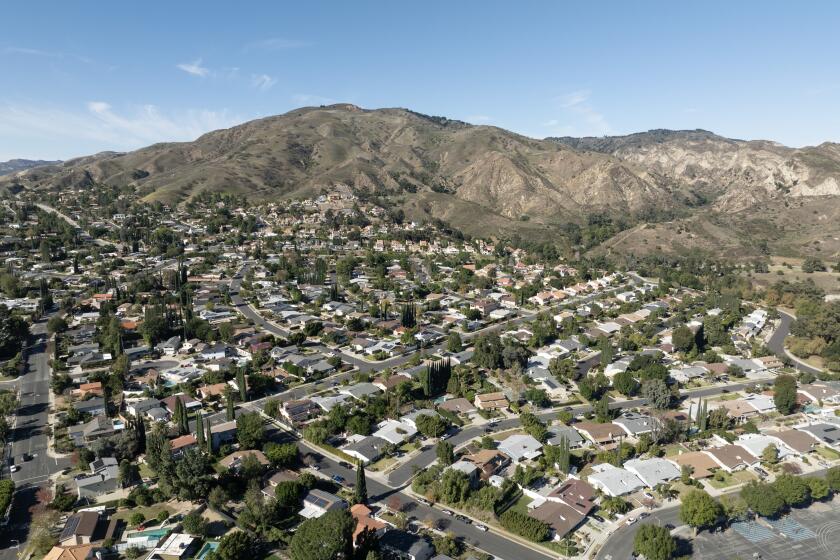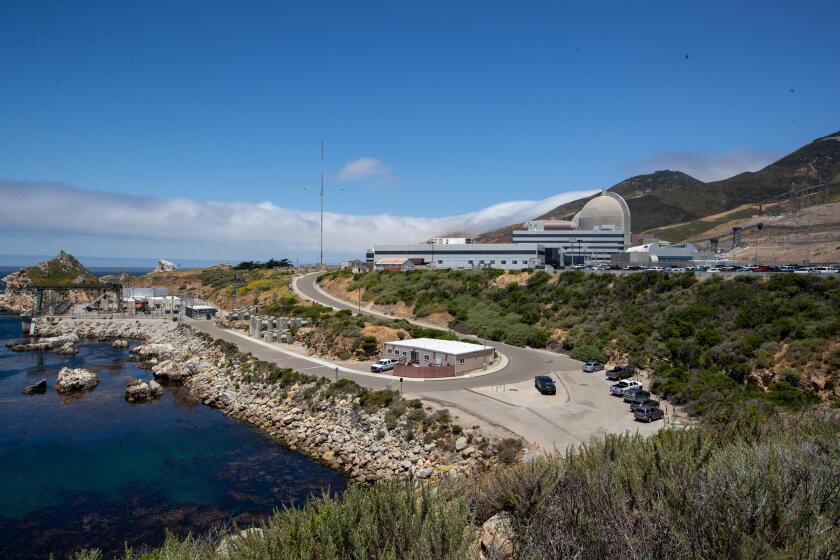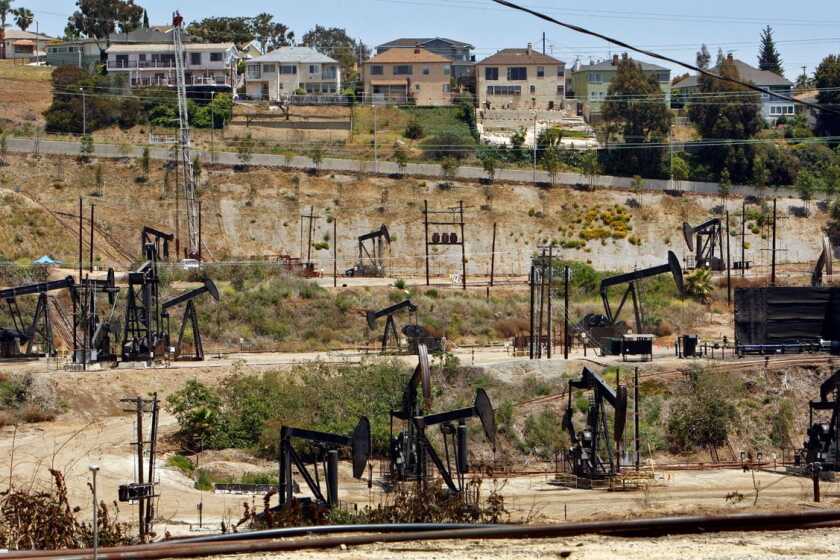
The U.S. EPA is now the lead agency tasked with containing a fire burning deep inside Chiquita Canyon landfill.
- Share via
As landfill operators struggle to extinguish a damaging fire deep within Chiquita Canyon Landfill, the U.S. Environmental Protection Agency has announced that it is taking the lead in efforts to contain the problem.
Since at least spring, acres of garbage have been smoldering in a closed portion of the Castaic landfill, causing contaminated water to burst onto surrounding hillsides and sending putrid odors into surrounding neighborhoods.
The intervention of federal regulators has underscored the gravity of the situation, which has placed Los Angeles County’s second-largest landfill under intense scrutiny, and prompted calls for its closure.
The fire, which experts say may be due to the buildup of oxygen within the landfill, has also raised question about the oversight of local air regulators, who were aware of the increasing oxygen levels, public records show.
“I welcome the U.S. EPA’s involvement,” said Los Angeles County Supervisor Kathryn Barger. “They are stepping up to the task of helping identify solutions and bringing resources to the table for an incident that has gone on for far too long.”
Unusual chemical reactions at L.A. County’s two largest landfills raise serious questions about the region’s long-standing approach to waste disposal.
Temperatures within the landfill have risen over 200 degrees, causing gases to expand and water to boil. The resulting pressure increase has sent piping-hot water bursting through the landfill’s cover and emitted foul odors.
The intense heat has also melted portions of a gas collection system, which consists of long polyvinyl chloride pipes that vacuum out methane and odorous sulfur gases.
Although it’s unclear if the underground fire is continuing to spread, the 30-acre affected area could take 2-4 years to cease burning, according to a Dec. 12 report from CalRecycle, the state agency that oversees waste management.
Eight state and local regulatory agencies have assembled under the EPA to discuss what steps need to be taken to prevent the underground fire from chewing through more of the 639-acre landfill and spewing dangerous chemicals.
The landfill operator, Waste Connections, is anticipating significant financial liabilities due to the burning, according to a financial report the company filed in November. It estimates that efforts to resolve the situation could cost around $30 million in the second half of 2023, $75 million in 2024 and $40 million in 2025.
Waste Connections has already installed several dozen new gas wells, some made with steel casings that can withstand the intense heat. The landfill has also installed a new flare to burn off flammable gases and a concrete drainage system to better collect polluted water so that it can be trucked offsite.
But state and county officials want the landfill to do more. Specifically, they have called on operators to apply 2 feet of dense soil, such as clay, to seal any cracks and better suppress fumes that have sickened residents in nearby Val Verde.
CalRecycle has also encouraged Waste Connections to review steps taken by an East Sparta, Ohio, landfill that experienced an underground fire in 2005. That fire burned for more than a decade and spread to nearly 90 acres.
Republic Services, the operator of the Ohio landfill, ultimately constructed a fire break — a trench separating the affected area from other parts of the site. The $6 million project was supervised by the U.S. EPA and state regulators.
The California Public Utilities Commission has voted to extend operation of the Diablo Canyon nuclear power plant for five more years.
Steve Cassulo, Chiquita Canyon’s district manager, said the landfill doesn’t believe installing a 2,000-foot-long fire break or barrier is necessary or feasible. Chiquita Canyon would need to excavate and relocate at least 20 million tons of waste to construct an effective buffer.
“The potential risk to human health and the environment in undertaking an excavation of such magnitude is incredibly great,” he said.
Cassulo noted that such work has been done in some extreme cases, such as in Bridgeton, Mo., where landfill operators needed to isolate areas of radioactive waste. However, those circumstances don’t exist at Chiquita Canyon, he said.
The landfill is expected to install temperature probes next month that will help regulators better monitor the fire at Chiquita Canyon. If it continues to spread, agency officials will discuss the possibility of mandating action.
As environmental regulators and the landfill debate over how to control the situation, the cause of the fire still remains uncertain.
However, the leading theory is that the landfill’s gas extraction wells may have overdrawn methane and other gases, inadvertently introducing oxygen deep inside the landfill’s well system. This oxygen can speed up the decomposition of organic waste, produce heat and eventually spark a fire.
Chiquita Canyon’s records show it had struggled with high oxygen levels in hundreds of wells in the year leading up to the fire. Elevated temperatures were also observed in dozens of wells.
Culver City’s ban on oil drilling and extraction will end fossil fuel extraction in 10% of the Inglewood oil field.
Local regulators were also aware of these issues long before the incident, according to public records.
Between 2011 and 2016, the South Coast Air Quality Management District signed off on several of the landfill’s requests to operate its wells with higher oxygen levels and temperature limits, which experts say could increase the risk of an underground fire.
This includes the gas well that CalRecycle has identified as the “point of origin” and others nearby — which were approved to operate at 145 degrees rather than 131.
Other gas wells in other portions of the landfill were allowed to operate with up to 10%-15% oxygen present, two to three times the previously permitted amount.
The air district didn’t return several requests for comment.
“Frankly, I would not have allowed it,” said Mike Mohajer, a retired engineer with the L.A. County Department of Public Works. “It doesn’t make sense. Oxygen increases the chance of a fire. And higher temperature — the same thing — it’s a higher potential for a fire.”
Although landfills in Southern California are still bound by stricter local permits, the U.S. EPA in 2021 relaxed temperature requirements for landfill gas wells, increasing the allowable levels from 131 degrees to 145 degrees. It also removed the requirement for oxygen limits, previously set at 5%.
Experts say it could set the stage for more incidents like Chiquita Canyon.
“From my standpoint, there’s a lot of things happening that show we have to be conservative when we’re constructing, operating and maintaining landfills,” Mohajer said. “We can’t lose control of them.”










